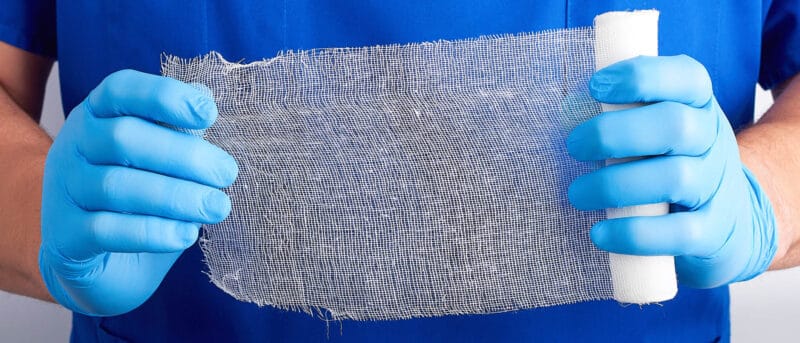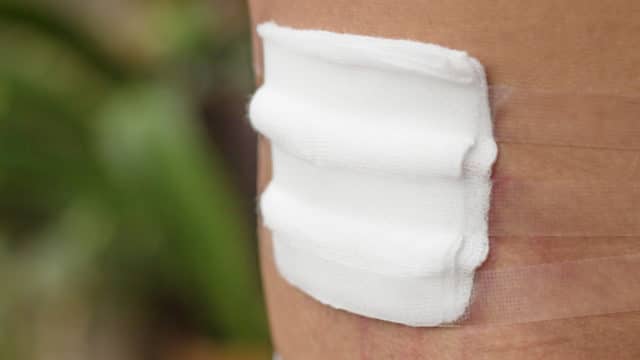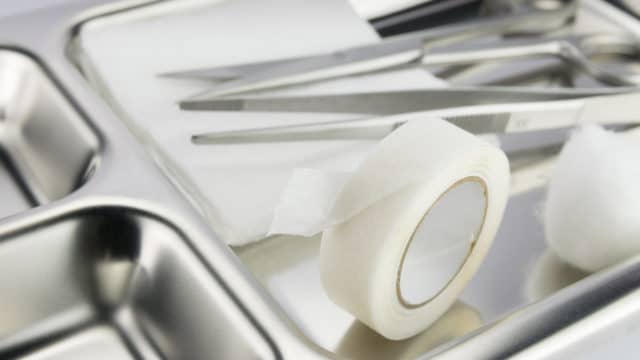Understanding Chronic Wounds: Types, Risks, and Specialized Care

Chronic wounds are defined as those resistant to healing within an expected amount of time or show very little improvement after several weeks. Chronic wound infections take place when complications in healing injuries or tears to the skin’s surface occur. The presence of germs and bacteria causes an open wound to become infected, requiring innovative strategies to help it heal.
Diagnosis and treatment of wound infections by wound care specialists vary depending on the characteristics of the wound type. Several types of bacteria can cause wound infections. Recognizing the signs and symptoms of chronic wounds and seeking specialized care is crucial for promoting healing and preventing complications.
Which Bacteria Commonly Cause Chronic Wound Infections?
The most common bacteria responsible for chronic wound infections are:
- Staphylococci
- Streptococci
- Streptomyces
Anyone can get an infection. People with open wounds, non-healing wounds, osteomyelitis, diabetes, or weakened immune systems are especially vulnerable to chronic wound infections that require specialized care.
Complicated wounds can exceed the resources, equipment, and expertise of most primary care providers. Patients with wounds that do not receive specialized care at a Wound Care Center® are 20 times more likely to end up hospitalized. Seeking treatment at a specialized wound care facility can significantly improve outcomes for patients with chronic wounds.
What are the Types of Chronic Wounds?
Chronic wounds come in many forms, each with specific causes and treatment needs. The main types include:
- Diabetic Foot Ulcers – resulting from a complication of diabetes, especially for people with lower extremity diabetic neuropathy
- Arterial/Ischemic Ulcers – associated with peripheral artery disease and result from tissue ischemia caused by insufficient blood flow; may need revascularization procedures
- Venous/Stasis Ulcer – Occurs when veins fail to return a sufficient supply of blood to the heart, causing blood to pool in the legs and persistent swelling
- Pressure Injuries – Caused by prolonged bed rest, immobility, or improperly fitting shoes, leading to localized tissue breakdown
- Radiation-related Wounds – soft tissue injury caused by radiation-related cancer treatment, often presenting months or years after treatment
- Neuropathic Ulcers – Common in patients with nerve damage (e.g., diabetics with peripheral neuropathy), requiring off-loading techniques
- Traumatic Wounds – Result from acute injuries like lacerations, crush injuries, or puncture wounds that do not heal properly
Understanding the different types of chronic wounds is essential for developing personalized treatment plans that address the underlying causes and promote healing.
People Most at Risk for Developing a Non-healing Wound
Patients suffering from a non-healing wound are often living with three to four additional chronic conditions that negatively impact their ability to heal on their own. Age, obesity, diabetes, cardiovascular disease and cancer are all factors that contribute to the inability to heal wounds without specialized care.
Signs and Symptoms When Infection is Present
Early signs of a wound infection may include:
- The wound becomes red and swollen
- Green or yellow pus or other foul-smelling cloudy fluid drains from the wound
- Fever or chills
- A red streak spreading from the wound
- The wound has blisters, becomes black or brown from dead tissue
- Increased pain or tenderness of the infected area
- Increased swelling around the wound
- The wound increases in size
Our multi-disciplinary wound care teams strive to prevent, identify and manage these serious infections. When non-healing wounds are left untreated, they may require a stay in the hospital. Even worse, untreated chronic wounds could lead to an amputation or possibly death. Sadly, 50% of patients die within five years of amputation. It is important to know the signs and symptoms of an infection and do everything you can to prevent it from occurring. Early detection and prompt treatment of wound infections can help prevent serious complications and improve patient outcomes.
How Are Chronic Wound Infections Diagnosed?
Once you suspect a chronic wound requires immediate debridement, your physician will perform specific tests to confirm the presence of an infection and determine the best approach. Common diagnostic steps include:
- Cultures of the blood, bone, or wound exudate to identify bacterial species
- X-rays, MRI, or CT scans to detect underlying osteomyelitis or deep‐tissue involvement
- Biopsy for histopathology, especially when atypical organisms or malignancies are suspected.
Chronic Wound Treatment
After confirming infection and tissue viability, our Wound Care Centers deliver care through customized patient treatment plans and may include advanced modalities that aid in wound healing, such as:
- Debridement: Surgical, enzymatic, or autolytic removal of necrotic tissue to support tissue regeneration and reduce bacterial load.
- Total Contact Casting: Off-loading pressure in diabetic foot ulcers to accelerate wound closure.
- Cellular-Based Tissue Therapy: Application of living cells or growth factors (e.g., Apligraf, Becaplermin) to promote granulation and re-epithelialization.
- Negative Pressure Wound Therapy (NPWT): Uses controlled suction to remove exudate, reduce edema, and improve perfusion.
- Hyperbaric Oxygen Therapy (HBO): Delivers ≥100% oxygen at increased pressure to enhance angiogenesis and leukocyte function.
How Can I Reduce My Risk of Wound Infection?
There are several things you can do to help ensure a successful treatment outcome for non-healing or chronic wounds. Good hygiene can help prevent infections and decrease your risk of getting sick. When home care instructions are carefully followed, you have a better chance of helping your wound heal. Here’s how to protect yourself:
Hand Hygiene & Preventive Steps
- Wash your hands thoroughly with soap and water for at least 20 seconds, cleaning from fingertips to wrists
- Rinse hands completely under clean running water
- Dry hands with a clean, single-use paper towel or clean cloth towel
- Use a paper towel to turn off the faucet to avoid recontamination
- Only touch your dressing with clean, just-washed hands
- If you have them, wear clean disposable gloves before touching wound dressings or supplies
Keep your wound clean and protected
- Keep urine, stool, and other body drainage away from your wound
- Keep your wound away from animal feces, urine, and hair
- Do not sneeze or cough on the dressing supplies or on your wound
- Keep your wound covered with a dressing at all times. The dressing protects the wound from dirt and bacteria, controls the drainage, and keeps medications on the wound
Create a safe space for care
- Choose a clean, well-lit place with a washable surface to make your dressing changes.
- Keep your dressing supplies away from the heat in a clean, closed container. You can use a plastic box with a lid and keep the box off the floor.
- Throw your old, used dressings away. Wrap them in two plastic bags and tie them tightly. Throw them away in a closed trash can.
When Should I Seek Help with an Infected Wound?
If you think you have an infected sore, contact your doctor or go to the emergency room. You should seek care right away. Patients may be referred to a Wound Care Center by a physician, health care professional or self-referral by contacting a Center near you directly. Prompt treatment of wound infections is crucial for preventing the spread of infection and promoting healing.
Trust Our Wound Care Specialists
You can trust us to help you heal. Our wound care specialists are ready to see you at one of our 600+ Wound Care Centers® across the country. If you or someone you care for has a wound that is not healing, find a Center near you today. At Healogics, we are committed to providing the highest quality care for patients with chronic wounds, helping them achieve optimal healing and improved quality of life.



